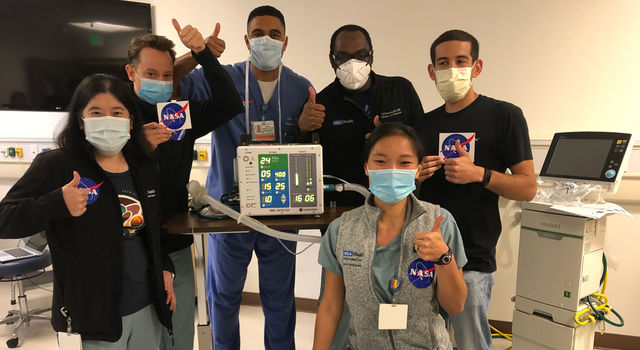Blogs | JPL | August 4, 2008
Looking for Earths Far From Home
What is Kepler?
Kepler is a mission that is designed to find Earth-sized planets outside our solar system. Specifically, it will look for these rocky planets in the "habitable zone" near their stars — meaning at a distance where liquid water could exist on the surface.
Kepler will accomplish this by monitoring a large set of stars (approximately 100,000) and looking for the signature dip in brightness that indicates that a planet has crossed between the spacecraft and the star. The instrument that detects this dip is called a photometer — literally, a "light meter." It is basically a large telescope that funnels the light from the stars onto a CCD array (similar to the ones used in digital cameras).
By surveying such a large number of stars using this "transit" method, Kepler will be able to determine the frequency of Earth-sized (and larger) planets around a wide variety of stars.
What do I think is cool about this mission?
I love the fact that the Kepler approach - looking for the dips in stellar brightness that occur when a planet passes between the photometer and a star - is so straightforward. It is such a wonderfully simple way to look for planets! Of course in practice, there are plenty of complicating factors that make this a challenging mission to execute. The change in brightness that we are looking for is very small (on the order of 0.01 percent). To make sure we can detect that, we have to carefully control noise in the system - things like electronic noise from reading out the CCDs, smear from tiny motions of the spacecraft, etc. These and other aspects of the mission have provided plenty of challenges to keep things interesting for the design team.
One of my favorite things about the Kepler mission is that the patch of sky we will be surveying is near a particular group of highly recognizable constellations. The stars Kepler will look at are in the area of what is known as the Summer Triangle, a group of constellations - Aquila, Cygnus and Lyra - that are overhead at midnight when viewed from northern latitudes in the summer months. When the scientist team starts identifying planets in our field of view, anyone will be able to go outside, point towards the Summer Triangle and say "they've just discovered a planet over there." To me, there is something about that which will make the discoveries that much more personal.
I am also a huge sci-fi fan and I have always been particularly fascinated by books and movies about how humans might some day colonize other worlds in the galaxy. I think it is fantastic to get to work on a mission that will be looking for planets outside our solar system that are Earth-sized and in a range around their stars that could be habitable; places where such colonization could one day take place... I can't wait to see what we find!
What do I do?
I am a member of the Project System Engineering Team at JPL. This team is responsible for a wide variety of tasks on Kepler, aimed at ensuring the project meets the driving scientific and technological objectives. This often involves checking that the interfaces between the different elements of the project work smoothly. For example, one of our responsibilities is to conduct end-to-end tests of the mission's information system. In this test, we check to make sure that the right commands are being generated to collect data, data is collected using spacecraft hardware, and then the data flows correctly through the ground data system. This lets us verify that the entire data flow chain functions as it should before we launch.
My particular focus has been ensuring that we work out all of the details associated with executing each of the mission phases (the launch phase, the on-orbit checkout period that we call the commissioning phase, and the main data-gathering portion of the mission, which is the science phase). I work closely with my colleagues at NASA Ames, Ball Aerospace and JPL to identify and resolve open issues associated with planning for, testing and eventually executing the activities associated with these phases.
What is happening on the project right now?
The project is in what is known as the Assembly, Test and Launch Operations phase. Right now, the assembled spacecraft and instrument (known collectively as the flight system) is in the middle of the environmental testing campaign at Ball. This involves many hours of running the flight system and monitoring its performance while exposing it to the types of temperatures, pressures and other conditions that it will see in space. The system that will collect and distribute the data is undergoing integrated testing as well, with teams of people working to push test data through all of the various ground interfaces. The operations team — the people who will be responsible for generating and testing commands, monitoring the health and safety of the spacecraft and ensuring that data is collected from it by the Deep Space Network — are undergoing training and getting ready for upcoming mission phase rehearsals that we call "operational readiness tests." Even though we are still several months away from launch, it is a very busy time on the project!
Who is involved?
The principle investigator and the science office that will lead the scientific data analysis are at the NASA Ames Research Center in Mountain View, Calif. The spacecraft and photometer were built at Ball Aerospace & Technologies Corporation in Boulder, Colo. The mission operations center is located at the Laboratory for Atmospheric and Space Physics at the University of Colorado at Boulder. The mission is managed here at the Jet Propulsion Laboratory in Pasadena, Calif.
TAGS:EARTH, KEPLER, STARS, SOLAR SYSTEM, PHOTOMETER








